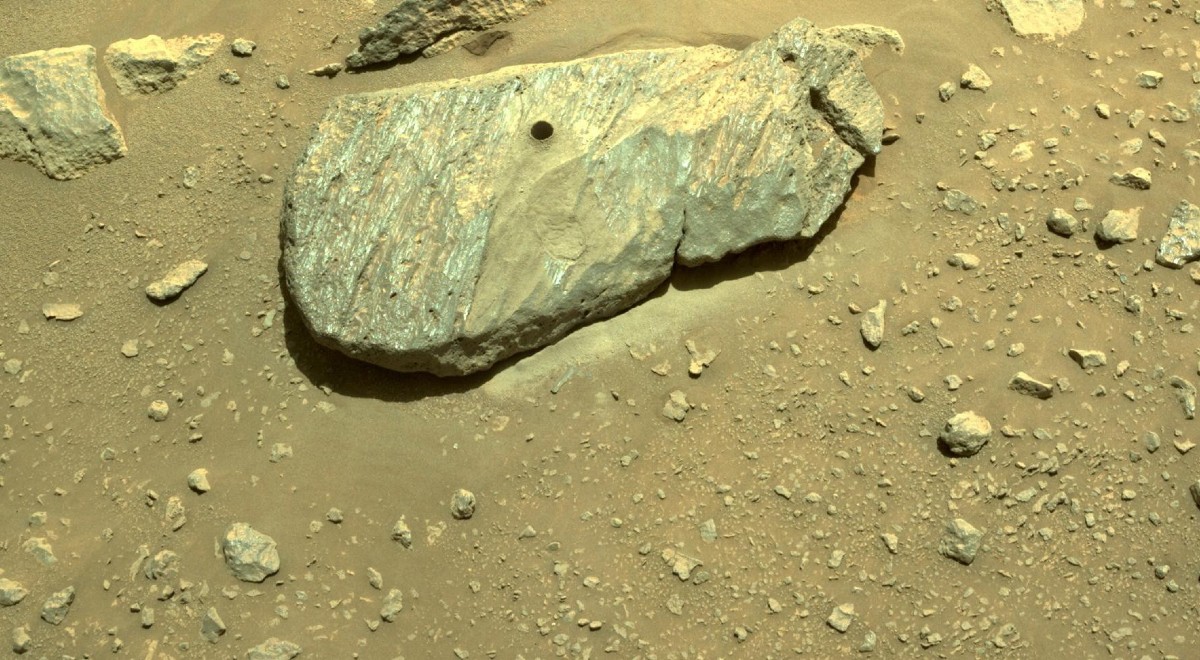NASA has confirmed that its rover managed to drill one of the rocks and take a sample, which will eventually be tested in a laboratory on Earth. These will be the first fragments of Mars available to scientists in the laboratories of the Earth, not counting Martian meteorites.
Data obtained by the US space agency on September 1, 2021 from the rover Perseverance, and photos obtained on September 4, show that the drilling of the Martian stone was successful. There are photos that clearly show the drilled hole, as well as photos of the container in which the collected sample is located.
The stone, or rather the boulder chosen for the study, was named “Rochette”. It is located on a ridge above the bottom of the crater Lake. The crater is of shock origin and has a diameter of less than 50 km. It is estimated that this crater was once a lake up to 250 meters deep.
This was the second drilling attempt initiated by Perseverance. The first was held on August 8, 2021 and was unsuccessful. At that time, the collected material was too loose and spilled out of the container in which it was later to be delivered to Earth.
I’ve got it! With better lighting down the sample tube, you can see the rock core I collected is still in there. Up next, I’ll process this sample and seal the tube. #SamplingMars
Latest images: https://t.co/Ex1QDo3eC2 pic.twitter.com/gumqpmoXBW
— NASA’s Perseverance Mars Rover (@NASAPersevere) September 5, 2021
For drilling, the rover uses a suitable drill located at the end of the two-meter manipulator. The obtained samples are slightly thicker than a pencil. Once the material is made, a photograph is taken, then a drill, and the container is vibrated for one second, repeating five times. The purpose is to clean the edge of the container from debris. After this stage, the container is photographed again.
The mission plans further drilling. The rover is expected to collect about 40 samples a year with a total weight of about one kilogram, for which a new probe (with a new rover) will then fly to take them from the surface of Mars and deliver them to Earth.
The mission of the rover Perseverance is called Mars 2020. It was launched from Earth on July 30, 2020 and landed on February 18, 2021. A video of the landing maneuver from the cameras on the landing platform and the rover is available. Other experiments conducted as part of the mission include drone flights, tests of oxygen production from the Martian atmosphere, geological and meteorological research and the search for potential signs of past biological life on the Red Planet.

